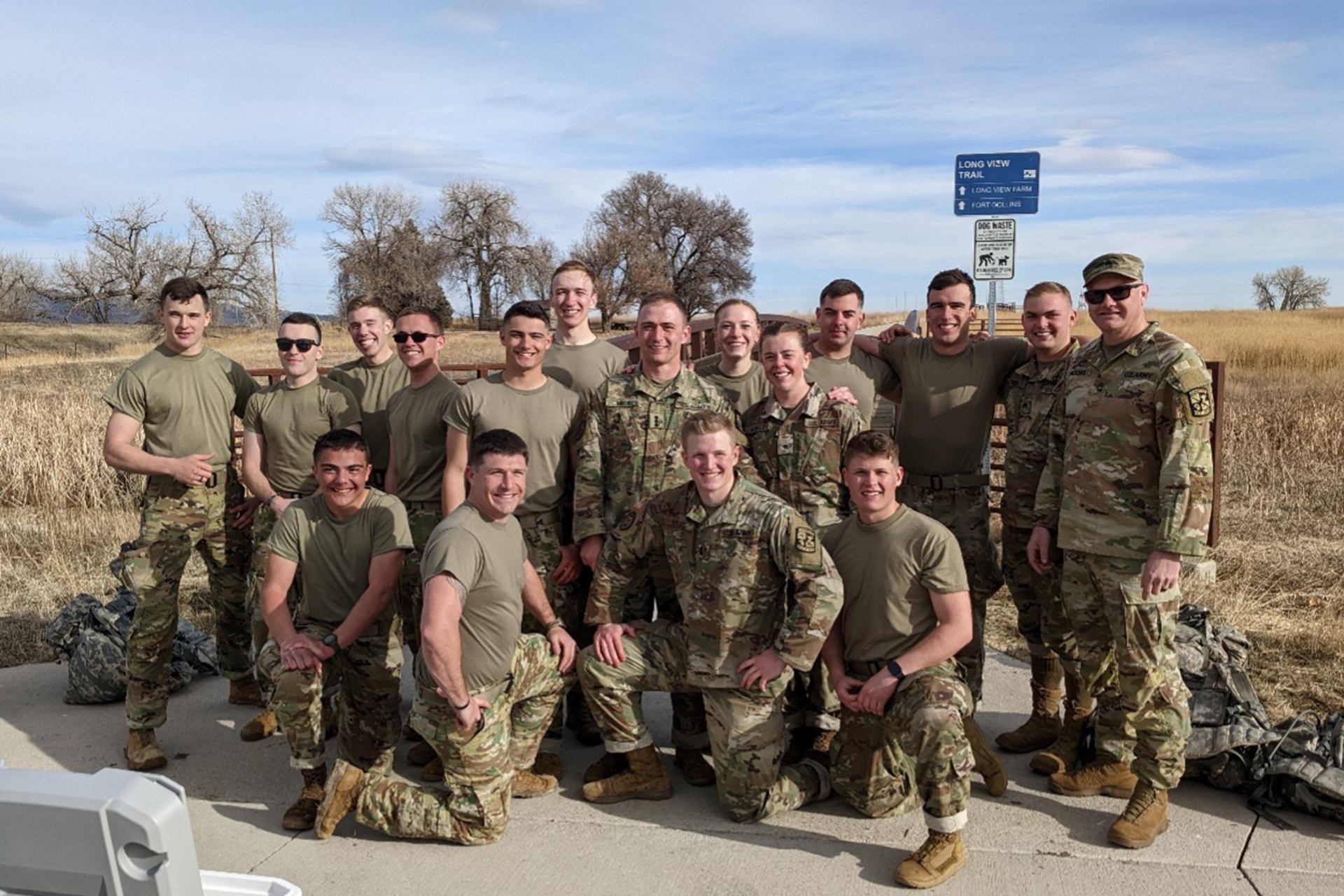
CSU Army ROTC cadets who participated in the event
Back Row: CDT Anderson, CDT Monroe, CDT Parol, CDT Wells, CDT Rodriguez, CDT Ujfalusy, CDT Tarr, SFC Moore; Middle Row: CDT Wolfe, CDT Clark, CDT Waskey, CDT Mika, CDT Kortz; Bottom Row: CDT Ozmai, CDT Dunn, CDT Freed, CDT Vought
A group of Colorado State University Army ROTC cadets recently commemorated the 75,000 Allied service members forced to march 63 miles in the Philipines during World War II.
Twenty-two CSU AROTC cadets virtually participated in the annual Bataan Memorial Death March, on March 20, completing a major trek around CSU and Fort Collins as part of a larger national event. While still primarily a military tradition, the Bataan Memorial Death March has become a popular event, attracting civilian participants and growing to nearly 10,000 marchers from across the country and several nations around the world. Participants choose between two courses: a 14.2-mile and a 26.2-mile course.
“This is an amazing tradition that the Ram Battalion honors,” said Al Armonda, military science instructor at CSU.
The Ram Battalion fielded three teams with a heavy (ruck march) from both CSU and the University of Northern Colorado, with a light team being hosted by CSU as well. The ruck consisted of at least 35 lbs of weight. For many cadets, this was their first taste of a marathon in any form, Armonda said.
The event is typically held in White Sands, New Mexico. However, due to COVID-19, event organizers allowed teams from across the nation to participate remotely. Each team was responsible for coordinating and overseeing their 26.2-mile route. CSU AROTC’s route traced the Spring Creek Trail, which started at CSU Military Science Building, established a turn-around at Sunset Vista Natural Area at 13.5 miles, and then returned to the start at CSU Military Science Building.
Among the notable finishers, Cadet Battalion Commander John Penland, an international studies student in the College of Liberal Arts, completed the memorial march in 4 hours and 31 minutes with a 35-pound ruck, averaging a 10:15 per mile pace. His goal was to run the event in under 4 hours and 35 minutes. Penland said that he managed to hold a consistent pace until the 19th mile, where he began to struggle but he continued to battle mentally and accomplished his goal.
According to Armonda, marchers participate in the Bataan Memorial Death March for many reasons: personal challenge, the spirit of competition, or to foster esprit de corps in their unit. Some march in honor of a family member or a particular veteran who was in the Bataan Death March or who was taken as a prisoner of war by the Japanese in the Philippines.
On April 9, 1942, 75,000 United States service members from the multiple branches of the U.S. military: Army, Army Air Corps, Navy, and Marines and Filipino soldiers were surrendered to Japanese forces after months of battling in extreme-climate conditions.
The Bataan Death March forced prisoners to march 63 miles. The prisoners were starved and maltreated the entire march with a death toll reaching well over 10,000 soldiers. The annual event is held in honor of those prisoners who suffered and died as a result of their captivity. The POWs would not see freedom until 1945 when U.S.-Filipino forces recaptured the lost territory.